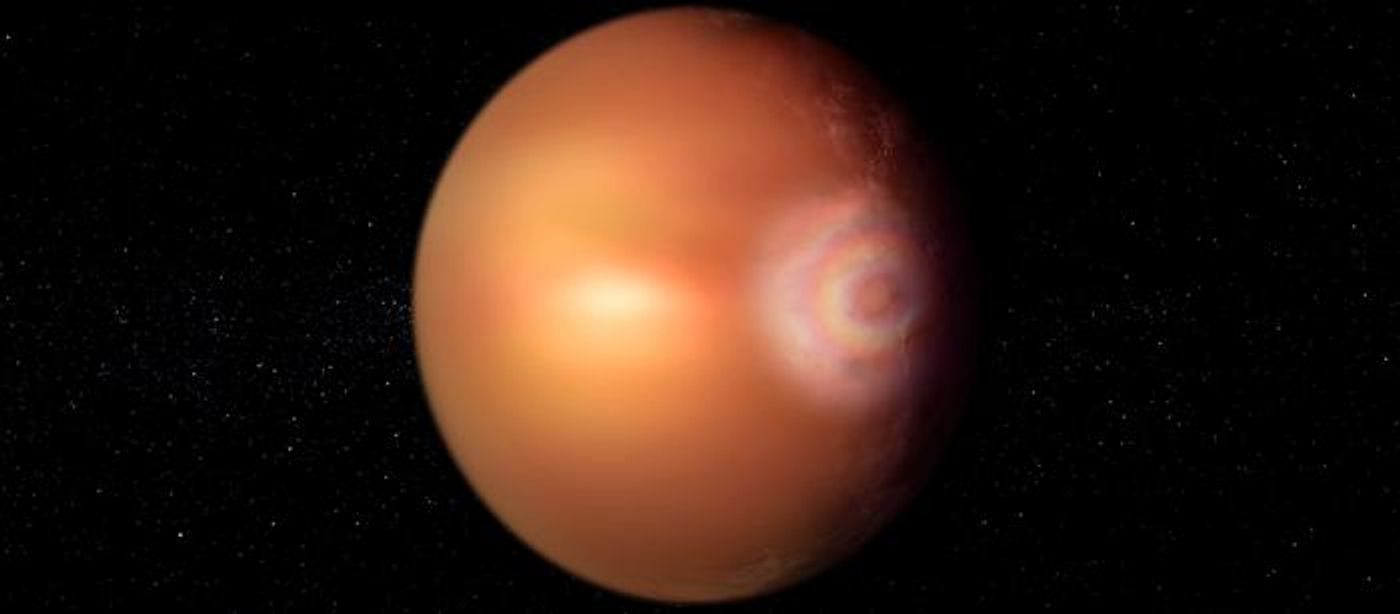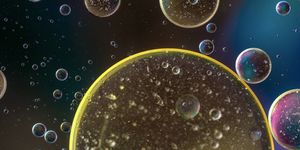New Insights into WASP-76b: The Ultra-Hot Giant Exoplanet
A recent study published in Astronomy & Astrophysics examines rainbow-like light patterns known as “glories” between the dayside and nightside of the exoplanet, WASP-76b, which occurs from the interactions between the parent star’s light and perfectly uniform droplets within a planet’s atmosphere. This study holds the potential to help astronomers better understand exoplanet characteristics, as this marks the first time these “glory” patterns have been observed outside of our solar system.
Artist’s rendition of a “glory” on WASP-76b. (Credit: © ESA, work performed by ATG under contract for ESA. CC BY-SA 3.0 IGO)
While WASP-76b was discovered in 2013, astronomers have been puzzled by its peculiar behavior along the exoplanet’s terminator, which is the separation point between the dayside and nightside. For example, astronomers have noted higher amounts of light along the east part of WASP-76b compared to the west part of the exoplanet.
For the study, the researchers used the European Space Agency’s CHEOPS space telescope to conduct more than two dozen observations of WASP-76b and combined this with data from NASA’s TESS, Hubble, and Spitzer telescopes to ascertain why this phenomenon is occurring. In the end, the researchers determined that this phenomenon was from glories, which have been observed both on Earth and Venus, with the Earth glories being caused by water droplets. As noted, this is the first time such glories have been observed outside the solar system.
‘‘The reason why no such glory has ever been observed outside our solar system is that this phenomenon requires very specific conditions,” said Dr. Olivier Demangeon, who is a researcher at the Instituto de Astrofisica e Ciencias do Espaco and lead author of the study. “First of all, the atmospheric particles must be almost perfectly spherical, completely uniform and sufficiently stable to be observed throughout a long time. These droplets have to be directly illuminated by the planet’s host star, and the observer - in this case CHEOPS - must be in the right position.”
The researchers concluded the glories on WASP-76b could be produced by an “unknown species” of droplets or aerosols and could enable researchers to use this new method to identify liquid bodies of water on exoplanets in the future.
What new discoveries will researchers make about glories in the coming years and decades? Only time will tell, and this is why we science!
As always, keep doing science & keep looking up!
Sources: Astronomy & Astrophysics, EurekAlert!, University of Geneva









